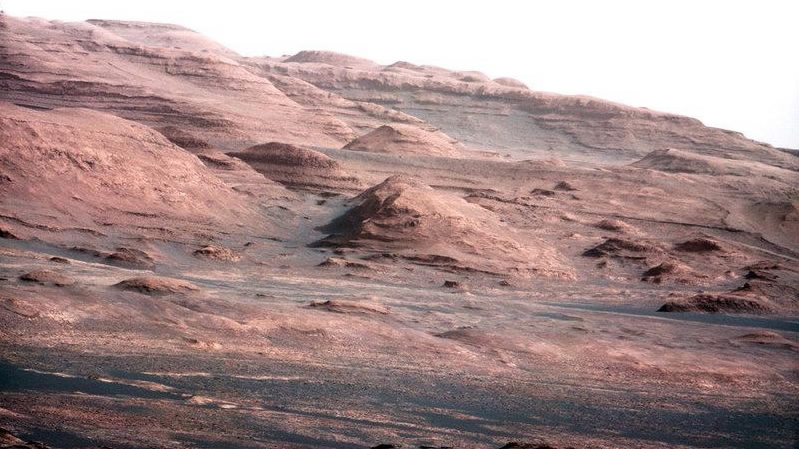
Space
09:37, 21-Nov-2017
Mars theory gets dusted: Streaks may be sand, not water

A new study suggests that dark streaks on the surface of Mars represent flowing sand and not water.
Monday’s news throws cold water on 2015 research that indicated that lines on some Martian slopes were signs of water on the planet.
Instead, Arizona scientists have reported in Nature Geoscience that the lines appear more like dry, steep flows of sand, rather than water trickling downhill, at or near the surface.
If water is present, it’s likely only in small amounts and not conducive to life, they said.

A new study suggests that dark streaks on Mars represent flowing sand, not water. /Photo via Reuters
A new study suggests that dark streaks on Mars represent flowing sand, not water. /Photo via Reuters
NASA, on the other hand, say the jury is still out.
Lead scientist for NASA’s Mars exploration program, Michael Meyer, points out that the latest study does not rule out the presence of water.
But he acknowledges, “It just may not be as exciting as the idea of rivers going down the sides of cliffs.”
NASA’s Mars Reconnaissance Orbiter provided the images of these so-called recurring slope lineae, or RSL.
Thousands have been spotted on Mars, from the equator midway to each pole.
The team led by the US Geological Survey’s Colin Dundas in Flagstaff, Arizona, measured 151 of these dark lines at 10 sites. Most of them end with slopes between 28 degrees and 35 degrees, a match for active sand dunes on both Mars and Earth, according to researchers.
A thin layer of dust on top that shifts and sometimes brightens the surface might help explain why these streaks seem to occur in the Martian summertime and then disappear, only to reappear the next year.
If these lines are dry, “this suggests that recent Mars has not had considerable volumes of liquid water,” the researchers write.
That’s key because water in liquid form would be essential to microbial life.
Dundas and his colleagues stress that many questions remain, demanding further study.

Water in liquid form would be essential to microbial life on Mars. /Photo via Reuters
Water in liquid form would be essential to microbial life on Mars. /Photo via Reuters
To Meyer, this is what makes Mars so fun. Scientists have long gone back and forth thinking of Mars as being dry or wet depending on the most recent data.
“I still think that Mars poses a great potential for having had life early on in its history,” Meyer said. “As long as that’s true, we also have a reasonable possibility of life still being on Mars. It just happens to be cryptic or well hidden.”
NASA currently has no rover – either at Mars or in development – capable of climbing such steep slopes. That has engineers coming up with ideas like Martian helicopters or drones.
“But going from a clever idea that works in your sandbox to something that goes to Mars takes a fair amount of engineering development,” Meyer said.
Source(s): AP

SITEMAP
Copyright © 2018 CGTN. Beijing ICP prepared NO.16065310-3
Copyright © 2018 CGTN. Beijing ICP prepared NO.16065310-3